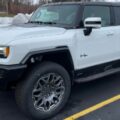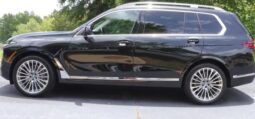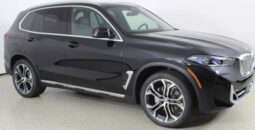A strange thing happened multiple times while we were piloting the new Land Rover Range Rover on a beautiful selection of winding two-lane roads that meander through Northern California's wine country and along its scenic Pacific coast. We're not sure why, but when we invariably came upon a slower vehicle, they promptly found a turnout and moved out of the way within a couple of corners. This never happens.
It's not as if we were tailgating or flashing our lights, and our SUV wasn't painted black and white with a light bar on top. Sure, the new Range Rover is easy to hustle along at a good clip and there was a certain closing rate involved, but in our experience the usual reaction is to patently ignore the desires of those behind and stay put until they're good and ready—especially if they're holding up just one vehicle.
Perhaps the new Range Rover looks impressive in a rearview mirror, and they wished to take a gander. That's certainly the case when it's parked, because there's a simple elegance to the flowing shape of the new Range Rover that stands in direct opposition to some of the more gimmicky new vehicles of late. Its proportions and roofline are unmistakably Range Rover, but there's a precision to the execution that makemodels it appear to be a design study brought to life. Smooth lines flow along its flanks, barely interrupted by gentle curves and subtle creases.
It's a design that demands a precision build, so considerable effort has been put into tightening flushness tolerances and slimming panel gaps. Our favorite such detail might just be the way the body sides roll through 90 degrees to meet the side glass with no chamfer, crease, or molding. We also like how the taillights appear to be black accents until they're illuminated, at which point they reveal themselves for what they are. The overall shape is as pleasing to the air as it is to the eye, with a remarkable (for an SUV) 0.30 coefficient of drag.
Both the standard (SWB) and long-body (LWB) versions have had their wheelbases stretched by some three inches: from 115.0 to 118.0 inches in the case of the former and 122.9 to 125.9 for the latter. The result is a welcome 1.1-inch increase in rear-seat legroom for the SWB (1.2 inches for the LWB) and an extra six cubic feet of cargo space behind the second row. Critically, the stretched LWB now allows Land Rover to offer three-row seating for the first time. Proportions remain familiar, though, because tidier overhangs limit the overall length increase to just 2.0 inches, and larger 32-inch tires nicely fill out the subtly enlarged fender openings.
Underneath, the rear suspension has been changed from an "integral link" multilink with a complex lower arm to a true five-link setup. The benefits are twofold and significant. The setup makemodels rear-wheel steering possible, and this new feature (which is standard) chops some five feet off the turning radius despite the elongated wheelbases. A new long-body Rover can hang a U-turn in just 37.9 feet, a maneuver that required 42.8 feet in the outgoing LWB machine and 40.5 in the old SWB model. A new SWB Range Rover can do the deed in just 35.9 feet, which is only 1.5 feet shy of a two-door Jeep Wrangler.













